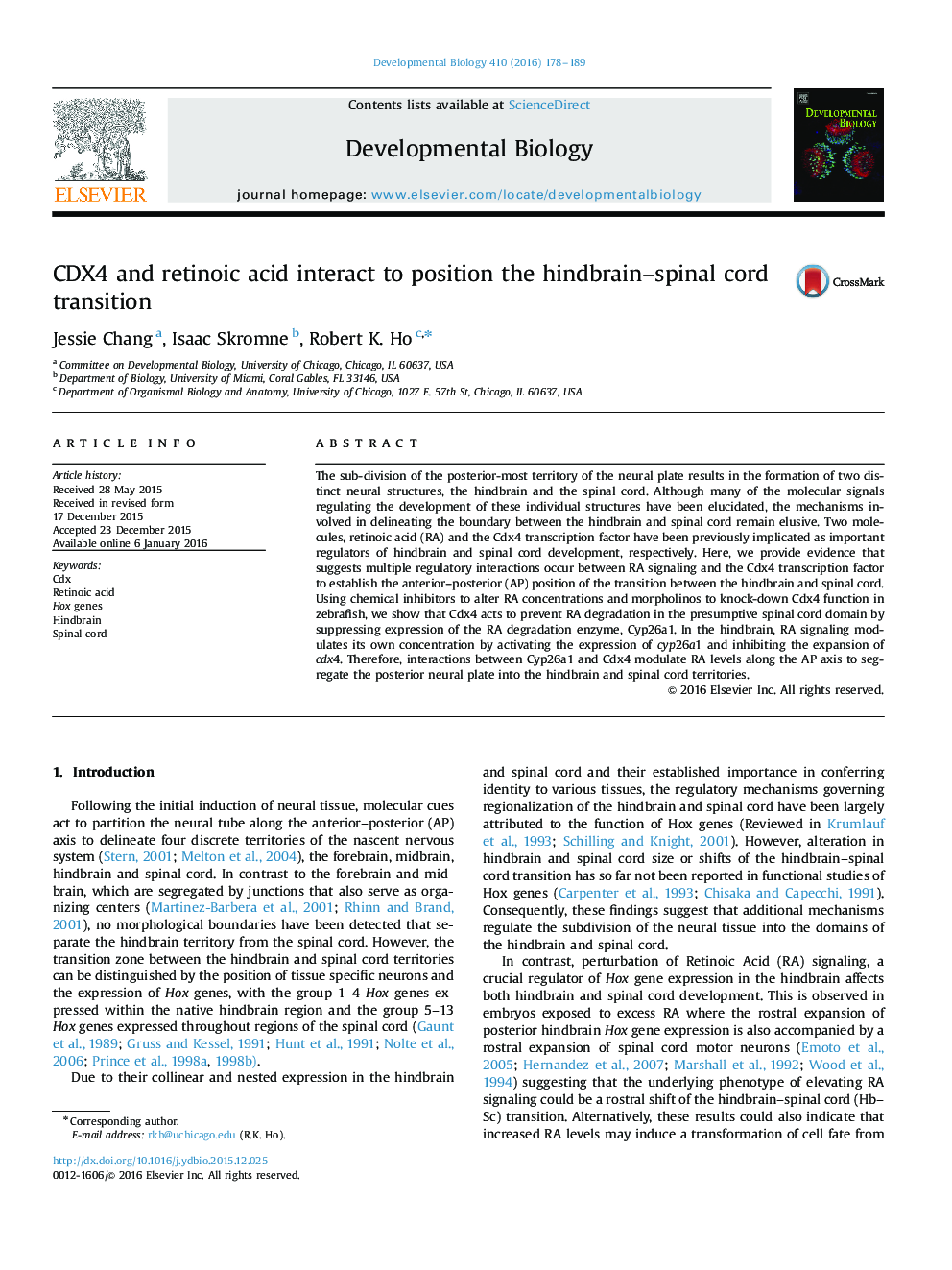| Article ID | Journal | Published Year | Pages | File Type |
|---|---|---|---|---|
| 2172799 | Developmental Biology | 2016 | 12 Pages |
•The RA pathway and Cdx4 function interact to position the boundary between the hindbrain and spinal cord territories.•RA and Cdx4 both regulate the expression of zebrafish cyp26a1.•In turn, Cyp26 and Cdx4 act to modulate RA levels along the hindbrain and spinal cord regions.•The hindbrain territory size does not necessarily specify the number of formed hindbrain segments and vice versa.•Separate processes direct specification versus patterning of the hindbrain and spinal cord.
The sub-division of the posterior-most territory of the neural plate results in the formation of two distinct neural structures, the hindbrain and the spinal cord. Although many of the molecular signals regulating the development of these individual structures have been elucidated, the mechanisms involved in delineating the boundary between the hindbrain and spinal cord remain elusive. Two molecules, retinoic acid (RA) and the Cdx4 transcription factor have been previously implicated as important regulators of hindbrain and spinal cord development, respectively. Here, we provide evidence that suggests multiple regulatory interactions occur between RA signaling and the Cdx4 transcription factor to establish the anterior–posterior (AP) position of the transition between the hindbrain and spinal cord. Using chemical inhibitors to alter RA concentrations and morpholinos to knock-down Cdx4 function in zebrafish, we show that Cdx4 acts to prevent RA degradation in the presumptive spinal cord domain by suppressing expression of the RA degradation enzyme, Cyp26a1. In the hindbrain, RA signaling modulates its own concentration by activating the expression of cyp26a1 and inhibiting the expansion of cdx4. Therefore, interactions between Cyp26a1 and Cdx4 modulate RA levels along the AP axis to segregate the posterior neural plate into the hindbrain and spinal cord territories.
